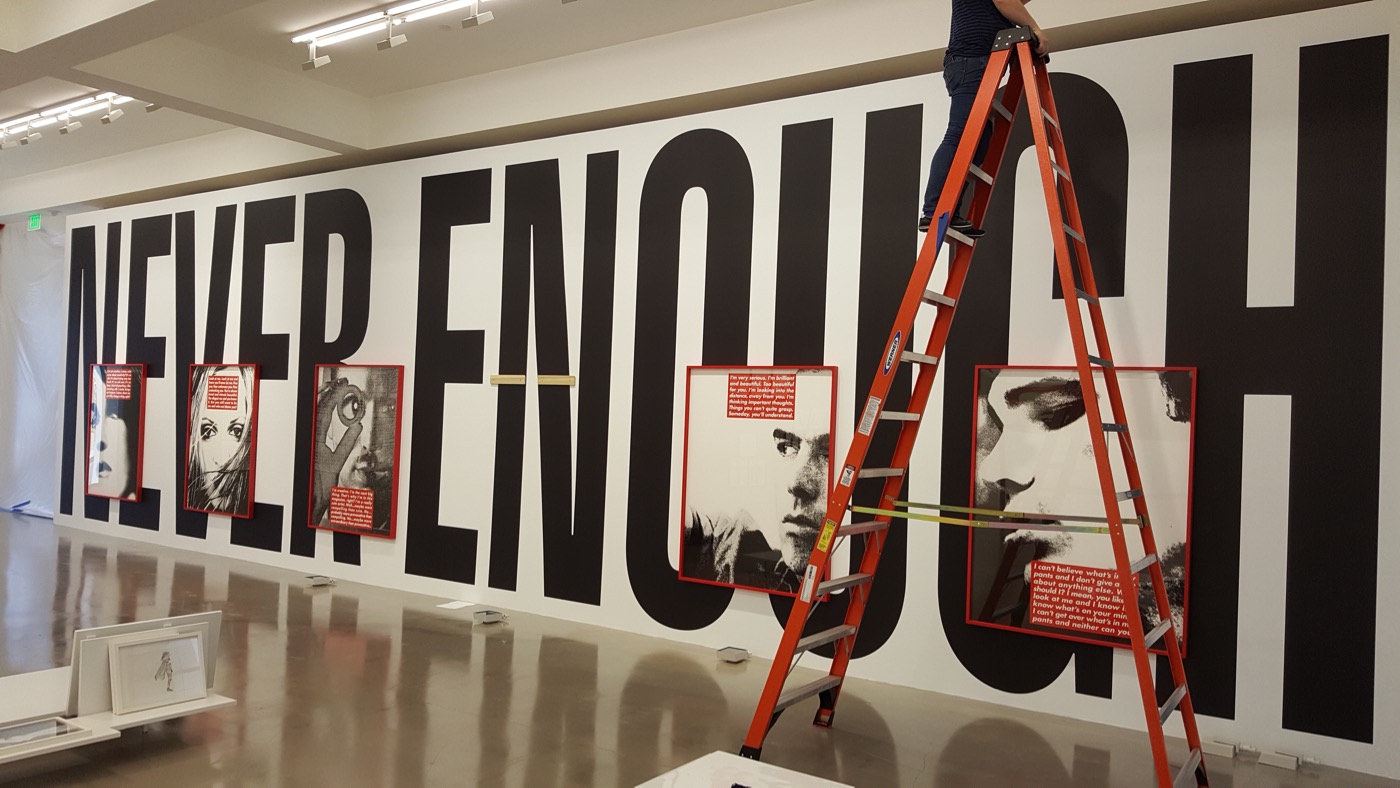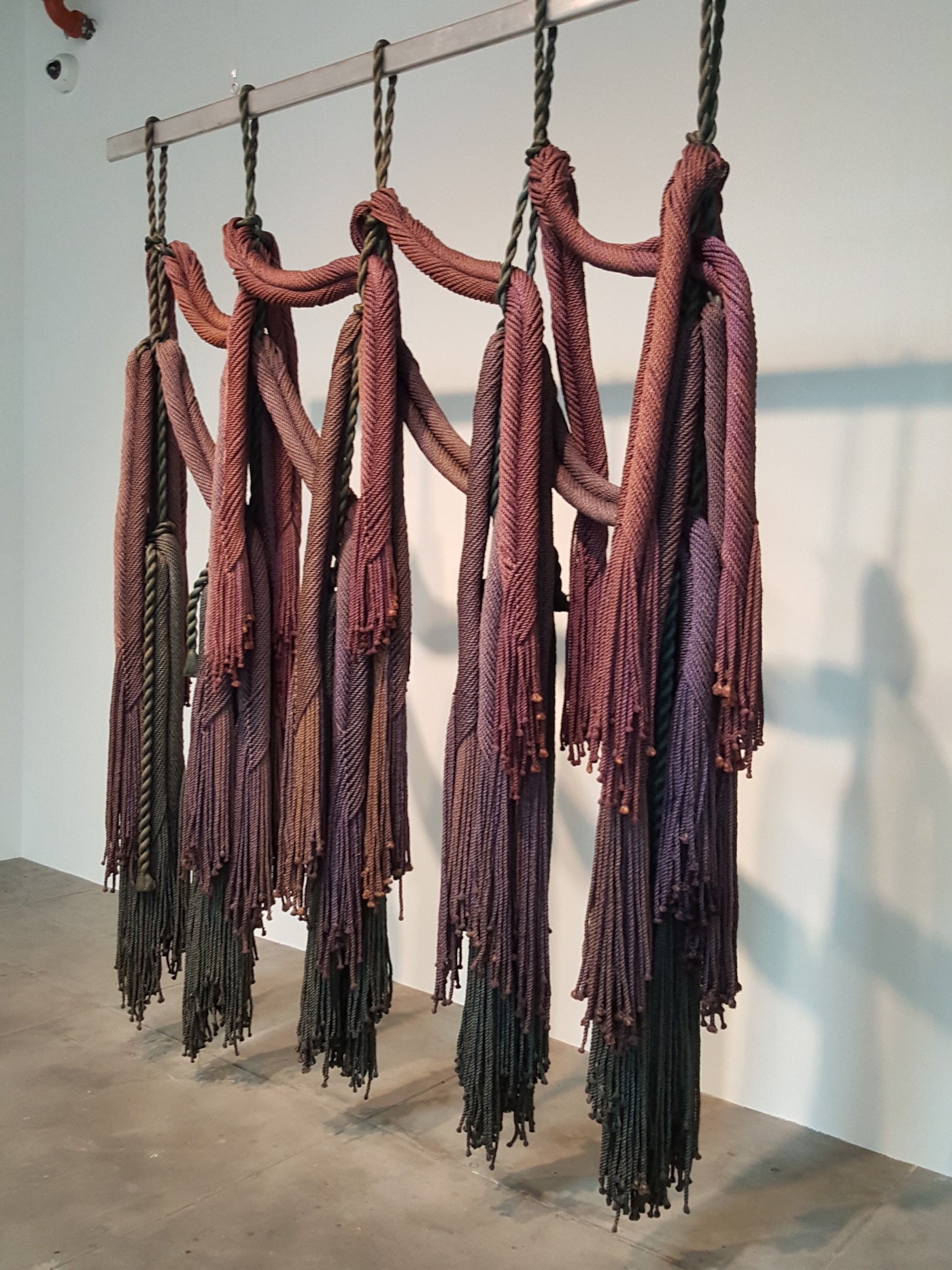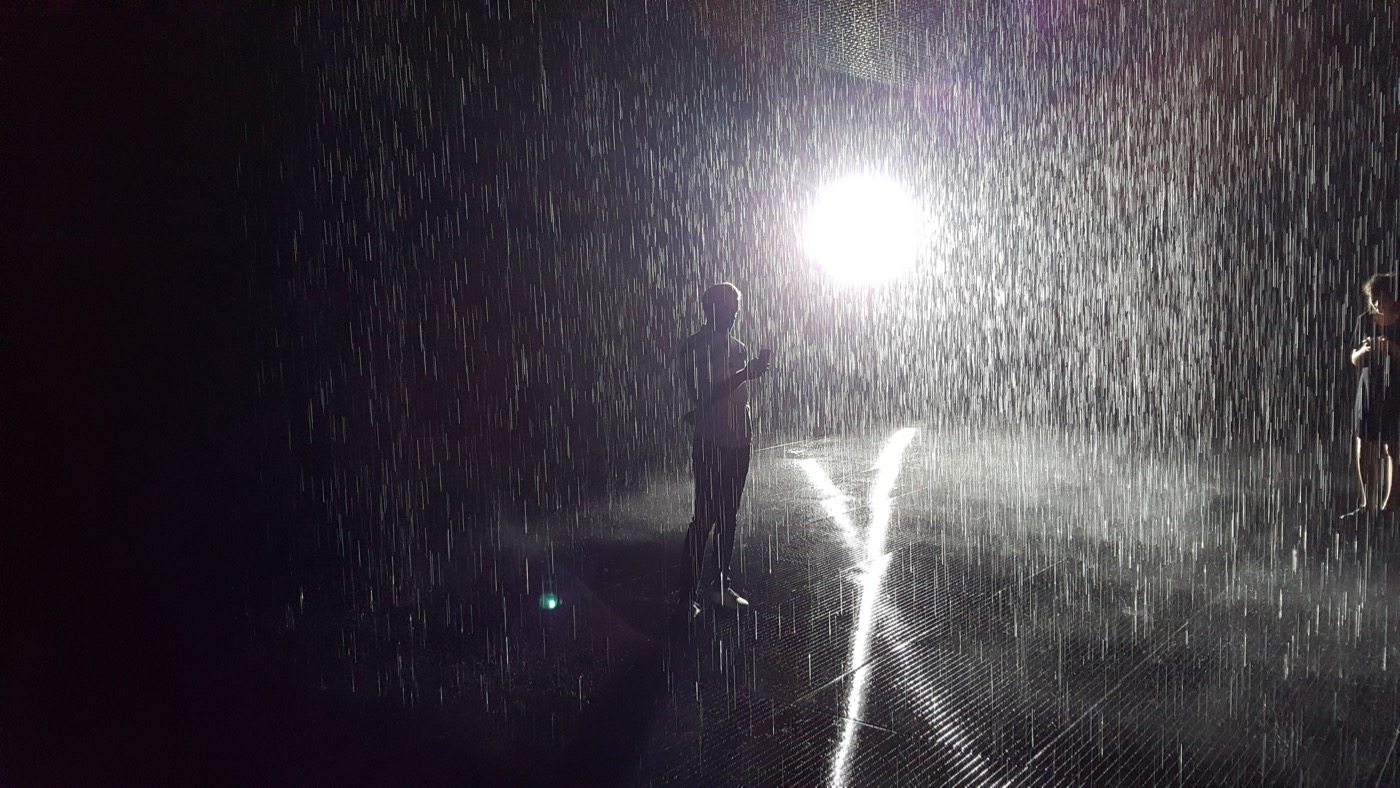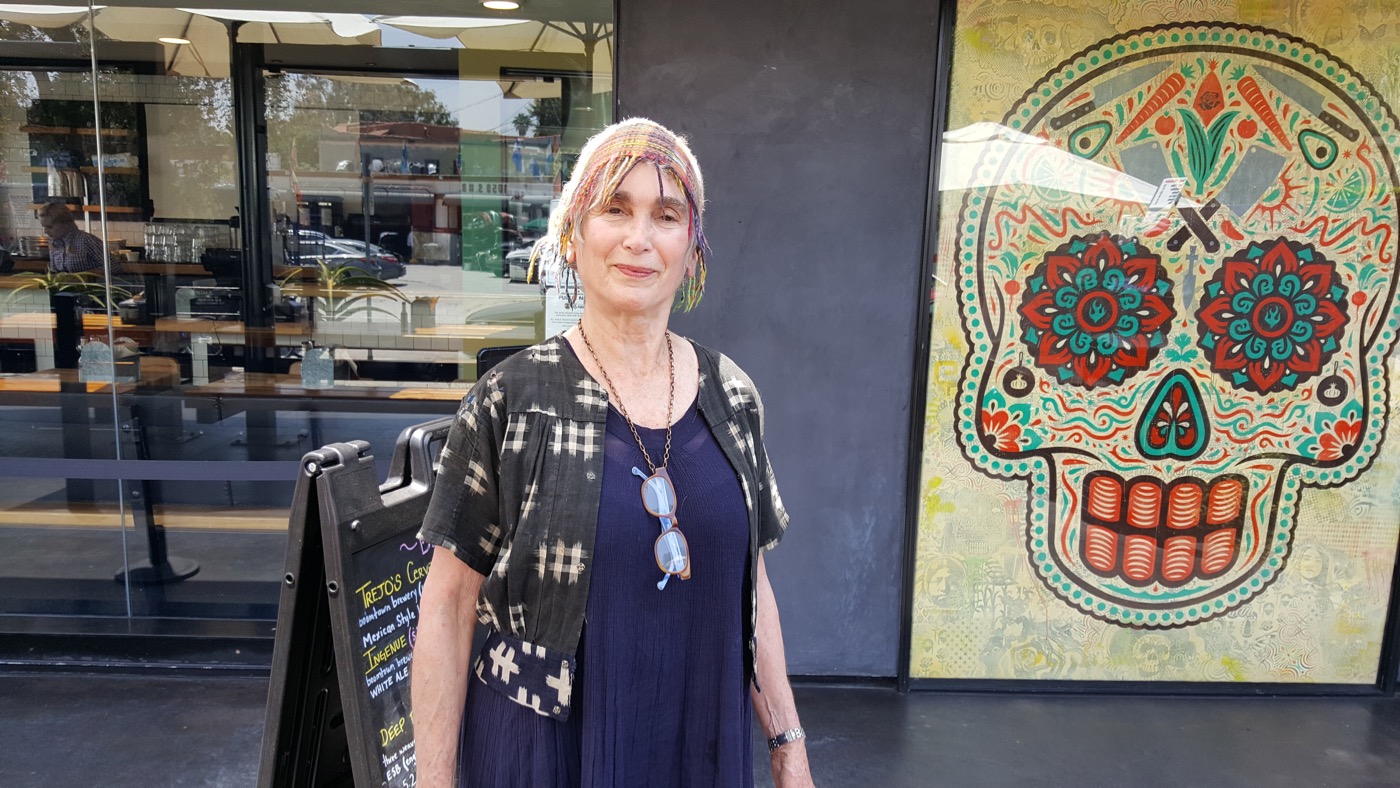The Alluring Fiction of Los Angeles as a Resurgent Art Center
- Get link
- X
- Other Apps
The Alluring Fiction of Los Angeles as a Resurgent Art Center
It had been 10 years since I had lived here and five years since I had last visited, and I was invited back by way of a press tour. The trip reminded me of what I had forgotten.
LOS ANGELES — LA is a sort of fictional place. It had been 10 years since I had lived here and five years since I had last visited, and I was invited back by way of a press tour hosted by the city’s Tourism and Convention Board. The trip reminded me of what I had forgotten. LA is fictional in at least two respects: it is home to a major cultural industry where large-scale fictions are constructed and produced; it is also a place of self-invention, made easier by the hydraulic machines of promotion that are built into the culture. It’s these machines that help to make the newly contrived project or persona real.

A theme to the promotional story repeatedly expressed to me and my colleagues during this trip is that Los Angeles is experiencing a major revitalization: new galleries and museums opening, projects expanding and previously downtrodden neighborhoods being resuscitated. There are actual developments anchoring this story. The Broad Museum just opened downtown late last year; the Museum of Contemporary Art (MOCA) has just come back from the brink of financial ruin, Hauser, Wirth and Schimmel opened a monumental gallery in a reconditioned flour mill complex in the downtown arts district in March of this year, and Sprüth Magers, based in Cologne, has also just opened their own massive outpost in LA, just across from the Los Angeles Country Museum of Art (LACMA) on Miracle Mile. Even more, institutions such as LACMA and Art + Practice have embarked on major expansion plans and The Main Museum is supposed to open later this year and the Institute of Contemporary Art, Los Angeles (the new iteration of the Santa Monica Museum that suspended operations last year) is said to be opening next year. Elsa Longhauser, who is the executive director of ICA LA calls this time a “cultural explosion, a moment to reinvent who we are and what we do.”

Artists can invent and reinvent themselves here, partly because the city itself is so new. LA only became part of the US in 1848, even if it was part of the Spanish Empire before that. Helen Molesworth the chief curator at MOCA links that perceived newness to greater opportunities for artists, saying during a walk through of MOCA “Because LA is so new, it’s more open.” Then there are the practicalities: “Artists have access to the kind of space that would be impossible in New York … and everyday it’s going to be sunny and pot’s still going to be legal.” Ann Philbin, the director of the Hammer Museum, echoed this, saying that recent changes to the LA art scene had to do with artists and curators realizing that: “quality of life issues — weather, affordability, real estate, a fantastic community” make LA attractive. It reminds her, Philbin said, of New York in the 1980s.
So part of the undergirding to this story of a new LA is the at times explicit at times unspoken comparison to New York City, a preeminent global capital for visual art. The numbers bear out the argument that LA is much more affordable in rents — one-bedrooms averaging $3,100 in New York vs. $1,750 per month in LA. Even factoring in the necessity for a car, a large initial investment with added maintenance and fuel costs, LA may feel easier. I did feel immediately different a few weeks ago upon walking out of LAX airport into a metropolis that while enormous, is less densely packed. There is more sky there. I could breathe more deeply. And yes, it was sunny every day. Perhaps the key comparison comes down to ease versus intensity. The extravagance of the Mediterranean climate mirrored in the astounding spaciousness of many of the galleries we visited. If I were still a practicing artist, and I had the means, I might seriously consider moving there. I did briefly consider it after being there only for a week, then thought about missing the generative friction of New York, the force and fervor of New York life (that is often also wearying and at times repulsive). When I mentioned this crucial difference over lunch with the group, Michael McDowell said he had two words for that: “February and August.”

LOS ANGELES — LA is a sort of fictional place. It had been 10 years since I had lived here and five years since I had last visited, and I was invited back by way of a press tour hosted by the city’s Tourism and Convention Board. The trip reminded me of what I had forgotten. LA is fictional in at least two respects: it is home to a major cultural industry where large-scale fictions are constructed and produced; it is also a place of self-invention, made easier by the hydraulic machines of promotion that are built into the culture. It’s these machines that help to make the newly contrived project or persona real.

A theme to the promotional story repeatedly expressed to me and my colleagues during this trip is that Los Angeles is experiencing a major revitalization: new galleries and museums opening, projects expanding and previously downtrodden neighborhoods being resuscitated. There are actual developments anchoring this story. The Broad Museum just opened downtown late last year; the Museum of Contemporary Art (MOCA) has just come back from the brink of financial ruin, Hauser, Wirth and Schimmel opened a monumental gallery in a reconditioned flour mill complex in the downtown arts district in March of this year, and Sprüth Magers, based in Cologne, has also just opened their own massive outpost in LA, just across from the Los Angeles Country Museum of Art (LACMA) on Miracle Mile. Even more, institutions such as LACMA and Art + Practice have embarked on major expansion plans and The Main Museum is supposed to open later this year and the Institute of Contemporary Art, Los Angeles (the new iteration of the Santa Monica Museum that suspended operations last year) is said to be opening next year. Elsa Longhauser, who is the executive director of ICA LA calls this time a “cultural explosion, a moment to reinvent who we are and what we do.”

Artists can invent and reinvent themselves here, partly because the city itself is so new. LA only became part of the US in 1848, even if it was part of the Spanish Empire before that. Helen Molesworth the chief curator at MOCA links that perceived newness to greater opportunities for artists, saying during a walk through of MOCA “Because LA is so new, it’s more open.” Then there are the practicalities: “Artists have access to the kind of space that would be impossible in New York … and everyday it’s going to be sunny and pot’s still going to be legal.” Ann Philbin, the director of the Hammer Museum, echoed this, saying that recent changes to the LA art scene had to do with artists and curators realizing that: “quality of life issues — weather, affordability, real estate, a fantastic community” make LA attractive. It reminds her, Philbin said, of New York in the 1980s.
So part of the undergirding to this story of a new LA is the at times explicit at times unspoken comparison to New York City, a preeminent global capital for visual art. The numbers bear out the argument that LA is much more affordable in rents — one-bedrooms averaging $3,100 in New York vs. $1,750 per month in LA. Even factoring in the necessity for a car, a large initial investment with added maintenance and fuel costs, LA may feel easier. I did feel immediately different a few weeks ago upon walking out of LAX airport into a metropolis that while enormous, is less densely packed. There is more sky there. I could breathe more deeply. And yes, it was sunny every day. Perhaps the key comparison comes down to ease versus intensity. The extravagance of the Mediterranean climate mirrored in the astounding spaciousness of many of the galleries we visited. If I were still a practicing artist, and I had the means, I might seriously consider moving there. I did briefly consider it after being there only for a week, then thought about missing the generative friction of New York, the force and fervor of New York life (that is often also wearying and at times repulsive). When I mentioned this crucial difference over lunch with the group, Michael McDowell said he had two words for that: “February and August.”

But here’s the quality of life issues that the LA revitalization story leaves aside: the continuing water crisis, which at times dips into drought, the yearly wildfire seasons that are increasing in frequency and severity, the reality that the city is not as affordable for artists, writers, and other creatives as many think, the solitude of one’s daily commute, alone in a car for hours — now being mitigated by the expanding development of the rail mass transit system. With it Los Angeles has recently begun to directly deal with the issues of population density that New Yorkers have long contended with, such as gentrification. Gallerist Steve Turner, who now has a large, successful gallery in Hollywood, admitted that he was priced out of his former space on Wilshire, and moved to his current space because of a coming rail station. The issue of rising commercial rents is not yet as dire as it is in New York City, partly at least because there is room in several neighborhoods, and because some galleries have the option of purchasing their own buildings. Esther Kim Varet of Various Small Fires said that many of the large galleries in Hollywood are invested long term precisely because they do own their spaces.
Yet, few of the gallerists I spoke with ever mentioned gentrification — which reads to me as a blinkered perspective. Now the issue is rising to the surface as residents of one neighborhood, Boyle Heights, are loudly demanding that galleries pack up their stuff and go. The gallerists in Boyle Heights, like the other gallerists I encountered, seem unprepared to deal with their presence potentially changing the communities they infiltrate. Few seemed ready to confront the idea that a rising tide may actually sink some boats.

However most of them have robust public programming, and most of that seems to be free. It’s as if they are uniquely cognizant of needing to have the conviviality among artists as the antidote to the long hours spent alone in your car, neither here nor there. Plus, there is a great network of institutions that support artists through public art projects, such as LAXART; or providing spaces for both making and exhibiting art, such as 356 Mission Road; or documenting art work and creating an archive available to the public, such as LA Contemporary Archive.

To acknowledge that the city of LA and the story of its resurgence is a fiction is not to say that it is a lie. As the writer Lee Child argues, fiction did not evolve for entertainment purposes; it gave the human tribe a means to survive by relating stories that inspired, empowered, and emboldened us. We stood a better chance of defeating the saber tooth tiger if we heard that it had be done. The art scene in the United States needs the LA story, needs dormant ideas to come to life, needs life to feel like its infused by art, needs events for us to gather together around ideas and imaginative ways of seeing. The question for me is when the promotion falls away and we have the actual experience, will it measure up?
- Get link
- X
- Other Apps
Comments
Post a Comment